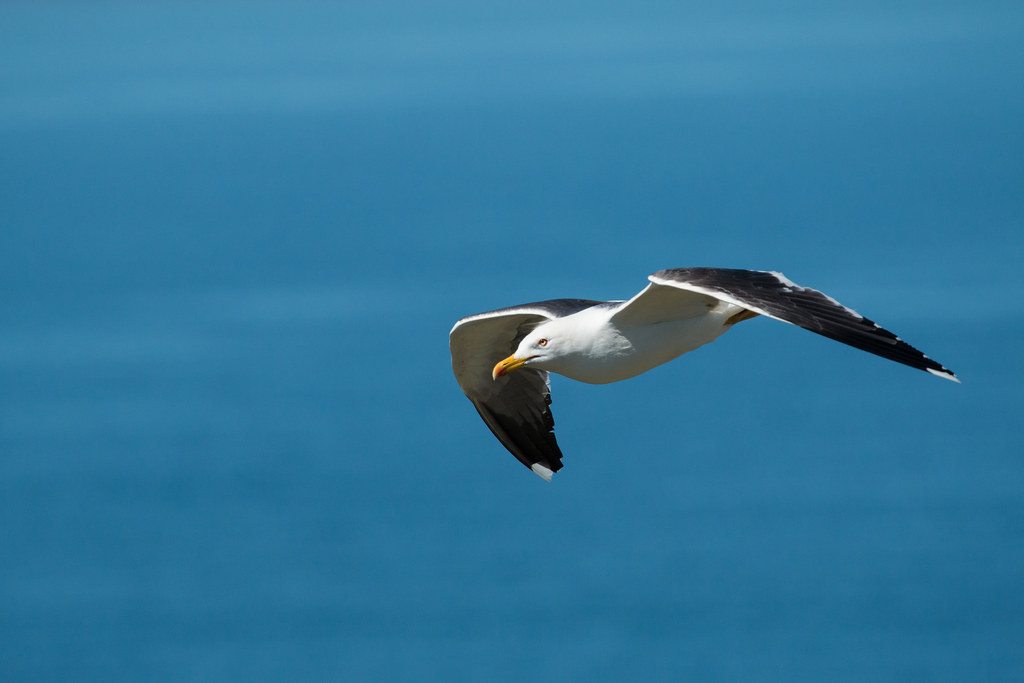Seagulls exemplify adaptability and opportunism in avian life, captivating both casual observers and researchers alike. Their diverse diets and scavenging behavior have long intrigued scientists, especially in light of recent viral content revealing a black-backed gull consuming a rabbit whole. This striking incident has prompted discussions surrounding the feeding habits of gulls, highlighting their remarkable versatility and presenting an eye-opening glimpse into their ecological roles. Such behaviors challenge conventional perceptions, underscoring the complexity of these often-misunderstood birds.
First, let’s delve into the typical dietary patterns of seagulls. Seagulls, particularly those frequenting coastal areas, are not fussy eaters. Their omnivorous nature allows them to consume an extensive variety of food items, making them one of the most adaptable birds in the animal kingdom. From leftover chips on the beach to insects and small mammals, these birds will eat just about anything they can find. They are scavengers by design, and this trait plays a crucial role in their survival, especially during the colder months when food may become scarce. As temperatures drop, seagulls often venture inland, seeking out warmer environments where human leftovers and other scavenged meals can be found. It’s not uncommon to see them rummaging through fields or farms for insects and rodents. This adaptability is essential, as it allows them to thrive in various environments and under changing conditions.
However, the incident of a black-backed gull consuming a rabbit raises several questions. How could a bird that weighs around five pounds manage to swallow a creature not much smaller than itself? The answer lies in the remarkable biology of these gulls. The black-backed gull, in particular, stands out with its impressive size, boasting a wingspan of about five feet. This formidable bird is not just an ordinary gull; it is the largest of its kind. Its size, combined with certain anatomical features, makes it a unique predator in its environment.
The anatomical analysis of gulls explained why they can consume a rabbit.
One fascinating aspect of gull anatomy is their unhinge-able jaws. This physiological trait allows them to open their mouths wider than one might expect. Without teeth to break down their food, gulls have evolved to swallow their meals whole. This is particularly advantageous when consuming larger prey, such as the rabbit in the viral video. The fact that black-backed gulls have been documented feeding on rabbits is not as rare as one might think. According to workers at a Welsh nature preserve, rabbits are a regular part of the gulls’ diets, especially when other food sources, such as seabirds or their chicks, are limited. This habit highlights the gull’s opportunistic feeding strategy, allowing it to take advantage of available resources to survive.
The video itself presents a gripping scene. The gull is seen capturing the rabbit, thrashing it around to ensure it is incapacitated, before proceeding to consume it with astonishing speed. In a matter of moments, the entire rabbit is gulped down, leaving only the hind legs dangling momentarily from the gull’s beak. This display not only captures the raw power of the black-backed gull but also its efficiency as a predator. It is a testament to the gull’s adaptability and skill in the natural world.
Moreover, the black-backed gull’s diet is not limited to rabbits alone. As noted by avian experts, these birds will eat anything that fits down their throats. Their diet can include shellfish, birds, carrion, and small mammals. This diverse range of food options allows them to thrive in various ecological niches, making them a common sight in urban and coastal areas alike. The gull’s ability to switch between scavenging human food and hunting live prey demonstrates its remarkable versatility.
In addition to their feeding habits, the black-backed gull’s behavior can sometimes be surprising. There have been accounts of gulls attacking small pets, showcasing their aggressive nature and opportunistic feeding strategies. Such incidents, while rare, remind us of the wild instincts that drive these birds, even in urban environments where human presence is prevalent. The adaptability of gulls is further illustrated by their intelligence in foraging for food. They are known to work together or observe other species to uncover food sources. This social aspect of their feeding habits indicates a level of cunning and awareness that enhances their survival chances.
As we reflect on the astounding video of the black-backed gull devouring a rabbit, it becomes clear that this behavior, while shocking to many, is a natural extension of the bird’s diet and hunting strategies. This event opens the door to discussions about the complexities of nature and the survival mechanisms of various species. The black-backed gull stands as a testament to the resilience and adaptability of wildlife in a changing world. Through both scientific study and observation, we can gain a greater appreciation for these remarkable birds and their role in the ecosystem. Nature often surprises us, revealing the intricate relationships and behaviors that govern the lives of its creatures. In the case of the black-backed gull, what may seem like a gruesome feeding frenzy is a perfect illustration of the cycle of life and the relentless pursuit of survival that characterizes the natural world. Ultimately, the incredible appetite of these gulls serves as a reminder that in nature, nothing is truly out of reach for those willing to adapt and seize the moment. This narrative not only highlights the black-backed gull’s impressive physical abilities but also emphasizes the broader themes of survival and adaptability that dominate the animal kingdom. As we continue to explore and understand these fascinating creatures, we gain insights not just into their lives but also into the delicate balance that exists within our ecosystems, where every creature, no matter how large or small, plays a crucial role in the ongoing story of life.
As we delve deeper into the anatomy of the black-backed gull, it becomes evident that their remarkable feeding abilities stem from several unique physical traits. The most striking feature is undoubtedly their beak, which plays a pivotal role in their hunting and feeding strategies. The black-backed gull’s beak is not only large but also designed for efficiency. The structure of the beak allows these birds to grasp and hold onto slippery prey, such as fish or, in this case, a rabbit, with considerable strength. The shape of the beak is slightly hooked at the tip, enabling the gull to tear away at flesh, which is particularly useful when consuming larger animals. This adaptation is crucial for their survival, as it permits them to exploit a wide range of food sources, from carrion to live prey.
Anatomically, the black-backed gull is fascinating. With a wingspan measuring between 150 to 170 centimeters, these birds are intimidating, to say the least. Weighing up to 2 kilograms, they are the largest gull species, which explains their ability to consume prey that is relatively large compared to their body size. Their size not only aids in their predatory skills but also allows them to soar gracefully over vast distances in search of food. This impressive wingspan is complemented by powerful muscles that enable them to maneuver adeptly in the air, making them efficient hunters when the opportunity arises.
In addition to their robust beaks and unhinging jaws, the digestive system of the black-backed gull is also noteworthy. Once the prey is consumed, the food travels down their esophagus into the gizzard, an organ that grinds down food particles, thanks to the presence of small stones that the gull ingests. This process allows them to digest even tough materials, ensuring that they can extract the necessary nutrients from their meals effectively. The efficiency of their digestive system is paramount, especially for a bird that may consume a whole rabbit in one sitting.

The black-backed gulls are efficient hunters.
The black-backed gull’s opportunistic feeding behavior is also a product of its environment. Living in coastal areas and urban settings, these gulls frequently encounter a diverse range of food options. Their scavenging nature is complemented by their ability to hunt and kill when the opportunity arises. In addition to rabbits, their diet can include various small mammals, birds, and even carrion, making them adaptable to different ecological niches. This versatility not only aids in their survival but also highlights their role in the ecosystem as both predators and scavengers.
Behaviorally, black-backed gulls exhibit fascinating social interactions and cooperative hunting techniques. They are known to work in groups when foraging, which can increase their success rates when hunting larger prey or scavenging for food. This social aspect of their feeding strategy showcases their intelligence and adaptability, as they can learn from one another and develop strategies to maximize their food intake. Observing the interactions between gulls can provide insight into their social structures and behaviors, further enriching our understanding of these birds.

The anatomy and feeding mechanisms of the black-backed gull reveal significant insights into wildlife adaptability and resilience. Their specialized beak structure, unhinging jaws, and efficient digestive systems demonstrate remarkable evolutionary traits that enable thriving in diverse environments. A viral video showcasing a black-backed gull consuming a rabbit highlights the complex behaviors and relationships in nature. Continued study of these birds enriches our understanding and appreciation of the intricate web of life surrounding us. The black-backed gull symbolizes evolution’s wonders and the relentless pursuit of survival, exemplifying the beauty and brutality of nature across coastal and urban landscapes.
Related posts:
Could a seagull eat a rabbit whole?
Great black-backed gull filmed swallowing rabbit whole
Hard act to swallow: gull caught on film eating squirrel whole





